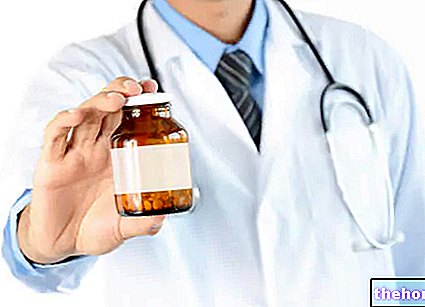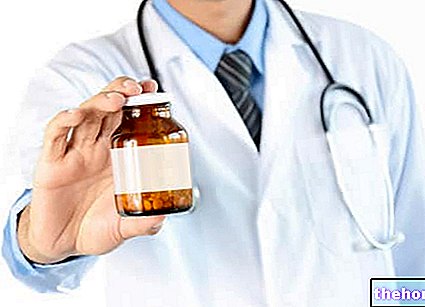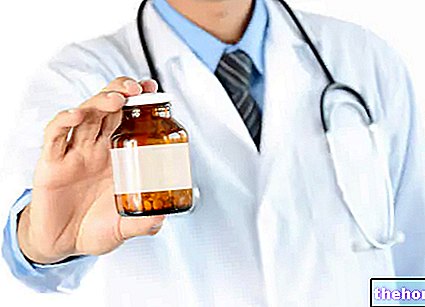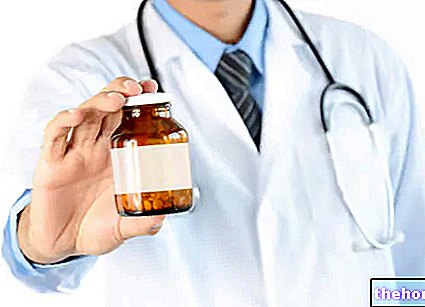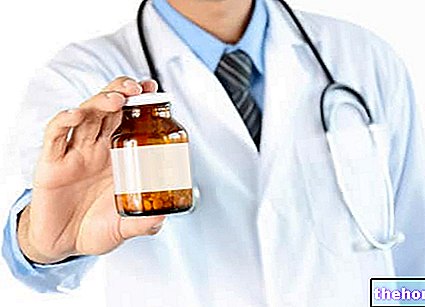Active ingredients: Paracetamol, Caffeine
TACHICAF 1000 mg / 130 mg effervescent granules for oral solution
Why is Tachicaf used? What is it for?
PHARMACOTHERAPEUTIC CATEGORY
Paracetamol, associations.
THERAPEUTIC INDICATIONS
Symptomatic treatment of painful affections of all kinds (for example, headache, osteo-joint and muscle pain, toothache, menstrual pain, surgery).
Contraindications When Tachicaf should not be used
- Hypersensitivity to paracetamol, caffeine or to any of the excipients.
- Subjects under the age of 15.
- Paracetamol products are contraindicated in patients with severe haemolytic anemia.
- Severe hepatocellular insufficiency.
- Due to the presence of aspartame, the use of Tachicaf is contraindicated in cases of phenylketonuria.
Precautions for use What you need to know before taking Tachicaf
In rare cases of allergic reactions, administration should be discontinued and appropriate treatment instituted.
Use with caution in subjects with glucose-6-phosphate dehydrogenase deficiency.
High or prolonged doses of paracetamol can cause high-risk liver disease and even severe changes in the kidney and blood, therefore administration in subjects with mild / moderate renal or hepatic insufficiency and in patients with Gilbert's syndrome should be carried out only if actually necessary and under direct medical supervision.
During treatment with Tachicaf, before taking any other drug, check that it does not contain the same active ingredients, as serious adverse reactions can occur if paracetamol is taken in high doses.
Also, before combining any other drug, contact your doctor. See also "Interactions".
Given the caffeine content, it is preferable to administer Tachicaf only for short periods. In case of prolonged use, it is advisable to monitor liver and kidney function, blood count and the onset of any symptoms of caffeinism (see the items "Undesirable effects" and "Overdose").
Interactions Which drugs or foods can modify the effect of Tachicaf
Oral absorption of paracetamol is dependent on the rate of gastric emptying. Therefore, concomitant administration of drugs that slow (eg anticholinergics, opioids) or increase (eg prokinetics) the rate of gastric emptying may lead to a decrease, respectively. or an increase in the bioavailability of the product.
Concomitant administration of cholestyramine reduces the absorption of paracetamol.
The simultaneous intake of paracetamol and chloramphenicol can induce an increase in the half-life of chloramphenicol, with the risk of elevating its toxicity.
The concomitant use of paracetamol (4 g per day for at least 4 days) with oral anticoagulants may induce slight variations in INR values. In these cases, more frequent monitoring of INR values should be performed during concomitant use and after its interruption.
Patients being treated with rifampicin, cimetidine or antiepileptic drugs such as glutethimide, phenobarbital, carbamazepine should use paracetamol with extreme caution and only under strict medical supervision. The same is true in cases of alcoholism and in patients treated with zidovudine.
Caffeine, when given at the same time as clozapine, can lead to an increase in blood levels.
The concomitant administration of caffeine and lithium may induce a decrease in blood levels and an increase in renal elimination of lithium, resulting in a potential reduced therapeutic efficacy.
Interference with some laboratory tests
The administration of paracetamol can interfere with the determination of uric acid (by the method of phosphotungstic acid) and with that of blood glucose (by the method of glucose-oxidase-peroxidase).
Tell your doctor or pharmacist if you have recently taken any other medicines, even those without a prescription.
Warnings It is important to know that:
During treatment with Tachicaf, excessive doses of coffee and tea, or other substances containing caffeine, are not recommended.
Tachicaf contains aspartame, a source of phenylalanine. This substance can be harmful if the person who takes it is suffering from phenylketonuria (see "Contraindications").
Pregnancy and breastfeeding
During pregnancy and breastfeeding, it is advisable to administer the product only in cases of real need and under the direct supervision of the doctor.
Driving and using machines
Tachicaf does not normally affect the ability to drive or use machines. However, it is good to know that, albeit in rare cases, the onset of dizziness can occur.
Important information about some of the ingredients of Tachicaf
Tachicaf contains 15 mmol sodium per sachet: to be taken into consideration in people with reduced kidney function or on a low sodium diet.
Tachicaf contains maltitol: Patients who are aware that they are intolerant to some sugars should consult their doctor before taking this medicine.
Tachicaf contains aspartame, a source of phenylalanine, therefore it is contraindicated in people with phenylketonuria (see "Contraindications").
Dosage and method of use How to use Tachicaf: Dosage
Adults and adolescents over 15 years: 1 sachet, to be dissolved in water, 1-2 times a day; in severe cases the daily dosage can be increased up to 3 sachets per day.
The interval between the different administrations must not be less than four hours.
Overdose What to do if you have taken too much Tachicaf
In case of accidental intake of very high doses of paracetamol, acute intoxication is manifested by anorexia, nausea and vomiting followed by profound deterioration of the general condition; these symptoms usually appear within the first 24 hours. In case of overdose, paracetamol can cause hepatic cytolysis which can evolve towards massive and irreversible necrosis, with consequent hepatocellular insufficiency, metabolic acidosis and encephalopathy, which can lead to coma and death. Simultaneously, an increase in hepatic transaminase, lactic-dehydrogenase and bilirubin levels are observed , and a reduction in prothrombin levels, which may occur in the 12-48 hours following ingestion
The measures to be adopted consist of early gastric emptying and hospitalization for appropriate treatment, by administering, as early as possible, N-acetylcysteine as an antidote: the dosage is 150 mg / kg i.v. in glucose solution in 15 minutes, then 50 mg / kg in the following 4 hours and 100 mg / kg in the following 16 hours, for a total of 300 mg / kg in 20 hours.
High daily doses of caffeine can induce "caffeinism", a syndrome characterized by anxiety, agitation and insomnia. In general, the cessation of caffeine intake leads to the disappearance of these effects in a short time. Very high doses of caffeine can cause symptoms of acute intoxication, such as agitation, tachycardia, arrhythmia, increased urine output, gastrointestinal disturbances, insomnia. In cases it is suggested to perform an early gastric emptying and to practice supportive therapy.
If you accidentally take too much Tachicaf, notify your doctor immediately or go to the nearest hospital.
Side Effects What are the side effects of Tachicaf
Like all medicines, Tachicaf can cause side effects, although not everybody gets them.
Skin reactions of various types and severity have been reported with the use of paracetamol including cases of erythema multiforme, Stevens Johnson syndrome and epidermal necrolysis. In addition, hypersensitivity reactions such as, for example, skin rash with erythema or urticaria have been reported. angioedema, larynx edema, anaphylactic shock The onset of allergic reactions leads to discontinuation of treatment.
The following undesirable effects have also been reported: thrombocytopenia, leukopenia, anemia, agranulocytosis, liver function abnormalities and hepatitis, kidney disorders (acute renal failure, interstitial nephritis, haematuria, anuria), gastrointestinal reactions and dizziness.
Rarely, effects attributable to caffeine hyperstimulation may occur, such as excitement, restlessness, tachycardia, arrhythmia, insomnia.
To avoid these effects, a marked reduction in the daily intake of coffee and tea, or other substances containing caffeine, is recommended during treatment with Tachicaf.
If any of the side effects gets serious, or if you notice any side effects not listed in this leaflet, please inform your doctor or pharmacist.
Expiry and Retention
Check the expiration date indicated on the package: this date means for the product in intact packaging, correctly stored.
Warning: do not use the medicine after the expiry date indicated on the package.
Store below 30 ° C.
KEEP THE PRODUCT OUT OF THE REACH AND SIGHT OF CHILDREN.
Medicines should not be disposed of via wastewater or household waste. Ask your pharmacist how to throw away medicines you no longer use. This will help protect the environment.
COMPOSITION
Each sachet contains:
Active ingredients: paracetamol 1000 mg and caffeine 130 mg.
Excipients: maltitol, mannitol, sodium bicarbonate, anhydrous citric acid, citrus flavor, aspartame, simethicone emulsion, sodium docusate.
PHARMACEUTICAL FORM AND CONTENT
Effervescent granules for oral use: packs of 10, 12, 16 and 20 sachets.
Source Package Leaflet: AIFA (Italian Medicines Agency). Content published in January 2016. The information present may not be up-to-date.
To have access to the most up-to-date version, it is advisable to access the AIFA (Italian Medicines Agency) website. Disclaimer and useful information.
01.0 NAME OF THE MEDICINAL PRODUCT
TACHICAF
02.0 QUALITATIVE AND QUANTITATIVE COMPOSITION
Each sachet contains 1000 mg of paracetamol and 130 mg of caffeine.
For the full list of excipients see section 6.1.
03.0 PHARMACEUTICAL FORM
Effervescent granules for oral solution.
White to slightly yellow granules.
04.0 CLINICAL INFORMATION
04.1 Therapeutic indications
Symptomatic treatment of painful affections of all kinds (for example, headache, osteo-joint and muscle pain, toothache, menstrual pain, surgery).
04.2 Posology and method of administration
TOadults and adolescents over 15 years: 1 sachet, to be dissolved in water, 1-2 times a day; in severe cases the daily dosage can be increased up to 3 sachets per day.
The interval between the different administrations must not be less than four hours.
04.3 Contraindications
- Hypersensitivity to paracetamol, caffeine or to any of the excipients.
- Subjects under the age of 15.
- Paracetamol products are contraindicated in patients with severe haemolytic anemia.
- Severe hepatocellular insufficiency.
- Due to the presence of aspartame, the use of Tachicaf is contraindicated in cases of phenylketonuria.
04.4 Special warnings and appropriate precautions for use
In rare cases of allergic reactions, administration should be discontinued and appropriate treatment instituted.
Use with caution in subjects with glucose-6-phosphate dehydrogenase deficiency.
High or prolonged doses of paracetamol can cause high-risk liver disease and even severe changes in the kidney and blood, therefore administration in subjects with mild / moderate renal or hepatic insufficiency and in patients with Gilbert's syndrome should be carried out only if actually necessary and under direct medical supervision.
During treatment with Tachicaf, before taking any other drug, check that it does not contain the same active ingredients, as serious adverse reactions can occur if paracetamol is taken in high doses.
Instruct the patient to contact the physician before associating any other medication. See also section 4.5.
Tachicaf contains 15 mmol sodium per sachet: to be taken into consideration in people with reduced kidney function or on a low sodium diet.
Tachicaf contains maltitol: patients with rare hereditary problems of fructose intolerance should not take this medicine.
Tachicaf also contains aspartame, a source of phenylalanine, so it is contraindicated in people with phenylketonuria (see section 4.3).
During treatment with Tachicaf, excessive doses of coffee and tea, or other substances containing caffeine, are not recommended.
Given the caffeine content, it is preferable to administer Tachicaf only for short periods. In case of prolonged use, it is advisable to monitor liver and kidney function, blood count and the onset of any symptoms of caffeinism (see sections 4.8 and 4.9.).
04.5 Interactions with other medicinal products and other forms of interaction
Oral absorption of paracetamol is dependent on the rate of gastric emptying. Therefore, concomitant administration of drugs that slow (eg anticholinergics, opioids) or increase (eg prokinetics) the rate of gastric emptying may lead to a decrease, respectively. or an increase in the bioavailability of the product.
Concomitant administration of cholestyramine reduces the absorption of paracetamol.
The simultaneous intake of paracetamol and chloramphenicol can induce an increase in the half-life of chloramphenicol, with the risk of elevating its toxicity.
The concomitant use of paracetamol (4 g per day for at least 4 days) with oral anticoagulants may induce slight variations in INR values. In these cases, more frequent monitoring of INR values should be performed during concomitant use and after its interruption.
Use with extreme caution and under strict control during chronic treatment with drugs that can determine the induction of hepatic monooxygenases or in case of exposure to substances that can have this effect (for example rifampicin, cimetidine, antiepileptics such as glutethimide, phenobarbital, carbamazepine) The same is true in cases of alcoholism and in patients treated with zidovudine.
Caffeine, if administered concomitantly with clozapine, can cause an increase in plasma concentration.
Concomitant administration of caffeine and lithium may induce a decrease in plasma concentration and an increase in renal clearance of lithium, resulting in a potential reduced therapeutic efficacy.
Interference with some laboratory tests
The administration of paracetamol can interfere with the determination of uric acid (by the method of phosphotungstic acid) and with that of blood glucose (by the method of glucose-oxidase-peroxidase).
04.6 Pregnancy and lactation
During pregnancy and breastfeeding, it is advisable to administer the product only in cases of real need and under the direct supervision of the doctor.
04.7 Effects on ability to drive and use machines
Tachicaf does not normally affect the ability to drive or use machines. However, the patient should be informed that, although rarely, the onset of dizziness may occur.
04.8 Undesirable effects
Skin reactions of various types and severity have been reported with the use of paracetamol including cases of erythema multiforme, Stevens Johnson syndrome and epidermal necrolysis. Hypersensitivity reactions such as skin rash with erythema or urticaria, angioedema, edema of the larynx, anaphylactic shock. In addition, the following undesirable effects have also been reported: thrombocytopenia, leukopenia, anemia, agranulocytosis, liver function abnormalities and hepatitis, kidney disorders (acute renal failure, interstitial nephritis, haematuria, anuria) gastrointestinal reactions and dizziness.
Rarely, effects attributable to caffeine hyperstimulation may occur, such as excitement, restlessness, tachycardia, arrhythmia, insomnia. To avoid these effects, a marked reduction in the daily intake of coffee and tea, or other substances containing caffeine, is recommended during treatment with Tachicaf.
04.9 Overdose
In case of accidental intake of very high doses of paracetamol, acute intoxication is manifested by anorexia, nausea and vomiting followed by profound deterioration of the general condition; these symptoms usually appear within the first 24 hours. In case of overdose, paracetamol can cause hepatic cytolysis which can evolve towards massive and irreversible necrosis, with consequent hepatocellular insufficiency, metabolic acidosis and encephalopathy, which can lead to coma and death. Simultaneously, an increase in hepatic transaminase, lactic-dehydrogenase and bilirubin levels are observed , and a reduction in prothrombin levels, which can occur in the 12-48 hours following ingestion.
The measures to be adopted consist of early gastric emptying and hospitalization for appropriate treatment, by administering, as early as possible, N-acetylcysteine as an antidote: the dosage is 150 mg / kg i.v. in glucose solution in 15 minutes, then 50 mg / kg in the following 4 hours and 100 mg / kg in the following 16 hours, for a total of 300 mg / kg in 20 hours.
High daily doses of caffeine can induce "caffeinism", a syndrome characterized by anxiety, agitation and insomnia. In general, the cessation of caffeine intake leads to the disappearance of these effects in a short time. Very high doses of caffeine can cause symptoms of acute intoxication, such as agitation, tachycardia, arrhythmia, increased urine output, gastrointestinal disturbances, insomnia. In cases it is suggested to perform an early gastric emptying and to practice supportive therapy.
05.0 PHARMACOLOGICAL PROPERTIES
05.1 Pharmacodynamic properties
Pharmacotherapeutic group: paracetamol, combinations.
ATC code: N02BE51
The combination of paracetamol 1000 mg and caffeine 130 mg is a combination capable of producing a faster and more powerful analgesic effect than the same dosage of paracetamol taken alone. This effect would appear to be due to a complex mechanism of enhancement of analgesic activity. of paracetamol, also resulting from a specific drug interaction exerted by caffeine at the level of the pharmacokinetics of paracetamol, which causes its faster absorption, higher plasma levels and lower metabolic clearance, thus making it faster and more bioavailable.
The analgesic effect of paracetamol is attributable to a direct action at the level of the Central Nervous System, probably mediated by the opioid and serotoninergic system, as well as by an action of inhibition of the synthesis of prostaglandins at a central level. Furthermore, paracetamol possesses a marked activity. antipyretic.
At therapeutic doses, caffeine inhibits the effects of adenosine as an antagonist of A1 and A2 receptors. However, the role of blocking these receptors in the complex mechanism of nociceptive transmission remains to be defined.
Caffeine also exerts a vascular effect, probably related to the enhancement of the activity of noradrenaline which is consequent to the inhibition of its extraneuronal metabolism. This action, which occurs at therapeutic doses, could explain the vasoconstriction in the brain and the soothing effect of caffeine on headache.
At the central level, caffeine also has euphoric and stimulating properties, and is able to change the tone of the mood.
05.2 Pharmacokinetic properties
Following a single oral dose of Tachicaf, paracetamol reaches maximum plasma concentration (approximately 23 mg × ml-1) 30 minutes after dosing, with an AUC0-t of approximately 68 mg × ml-1 × h and a half-life around 4 hours. Paracetamol is metabolised in the liver and only 2-5% of the dose is excreted unchanged in the urine. The volume of distribution is 0.9 L / kg.
Caffeine has a plasma peak (equal to 4.3 mg × ml-1) approximately 30 minutes after administration, with an AUC0-t of approximately 28 mg × ml-1 × h and a half-life slightly greater than 5 hours. Caffeine is extensively metabolised and only 1-5% of the dose is excreted unchanged in the urine. The volume of distribution varies between 0.5 and 0.7 L / kg.
05.3 Preclinical safety data
Administration in combination (paracetamol: caffeine ratio equal to 7.69: 1) did not show any synergism in the toxic effects of the two products and a LD50 for the combination greater than 300 mg / kg.
Acute and chronic toxicity studies did not reveal any adverse effects. The LD50 values of paracetamol after oral administration vary from 1300 to over 4000 mg / kg depending on the animal species used, while for caffeine the corresponding LD50 values are between 127 and 230 mg / kg.
06.0 PHARMACEUTICAL INFORMATION
06.1 Excipients
Maltitol, mannitol, sodium bicarbonate, anhydrous citric acid, citrus flavor, aspartame, simethicone emulsion, docusate sodium.
06.2 Incompatibility
Not relevant.
06.3 Period of validity
4 years.
06.4 Special precautions for storage
Store below 30 ° C.
06.5 Nature of the immediate packaging and contents of the package
Box of 10, 12, 16 and 20 heat-sealed sachets in paper-aluminum-polyethylene polylaminate.
06.6 Instructions for use and handling
Unused medicine and waste derived from this medicine must be disposed of in accordance with local regulations.
07.0 MARKETING AUTHORIZATION HOLDER
Joint Chemical Companies Angelini Francesco - A.C.R.A.F. S.p.A.
Viale Amelia, 70 - 00181 ROME.
08.0 MARKETING AUTHORIZATION NUMBER
Tachicaf 1000 mg / 130 mg effervescent granules, 10 sachets:
AIC n. 036120018
Tachicaf 1000 mg / 130 mg effervescent granules, 12 sachets:
AIC n. 036120020
Tachicaf 1000 mg / 130 mg effervescent granules, 16 sachets:
AIC n. 036120032
Tachicaf 1000 mg / 130 mg effervescent granules, 20 sachets:
AIC n. 036120044
09.0 DATE OF FIRST AUTHORIZATION OR RENEWAL OF THE AUTHORIZATION
April 24, 2008
10.0 DATE OF REVISION OF THE TEXT
AIFA determination of 24 April 2008

